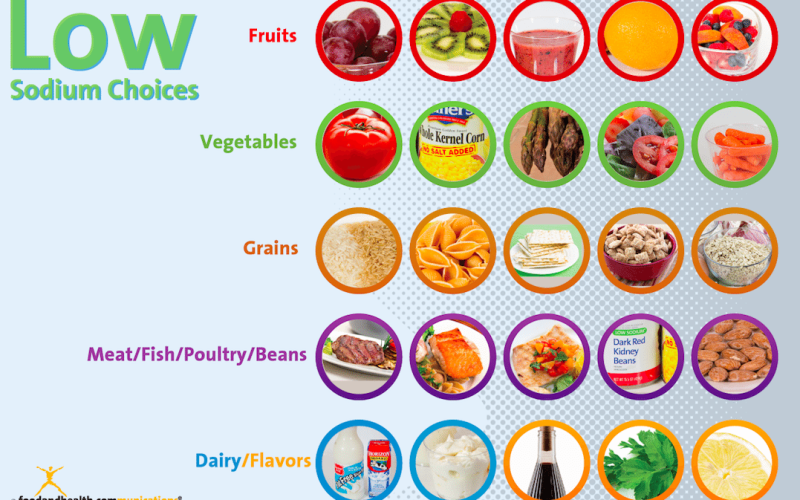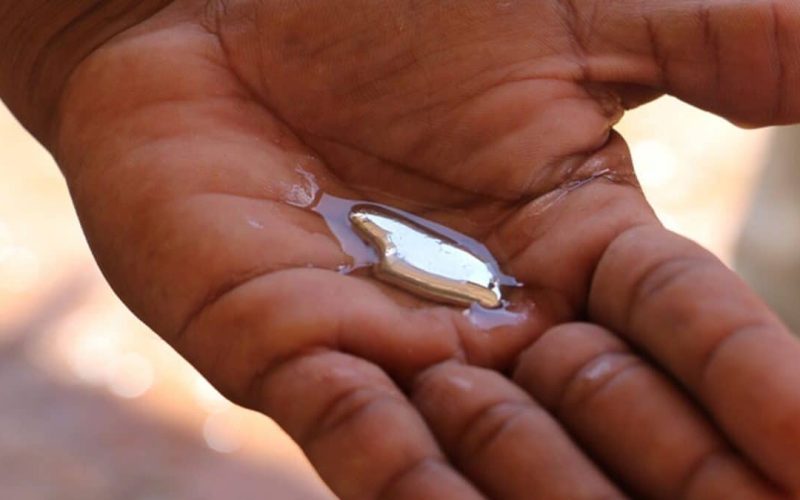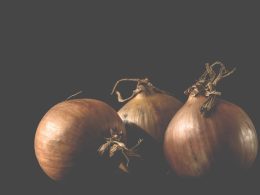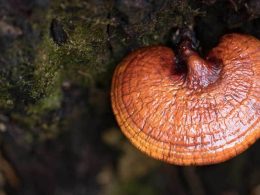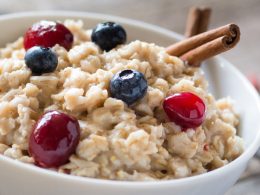Diet is everything when it comes to reversing chronic diseases and one of such diet is the low-sodium diet. Don’t get me wrong, sodium is a highly important essential mineral in the body.
Some of the functions of sodium in the body are regulation of fluid, maintaining blood pressure, electrolyte balance, and cellular functions amongst others.
It performs a lot of important functions in the body and very vital to overall health but in some circumstances, you have to reduce your intake of sodium because high sodium level or intake can prevent healing one way or the other.
Some of the conditions that need a low-sodium diet are heart failure, kidney disease, high blood pressure, and other cardiovascular diseases.
Food Sources of Sodium
Sodium is present in most whole plant food we eat although vegetables, poultry, fruits, contain smaller amounts. Fresh plant-based foods usually contain a lower amount of sodium when compared to animal foods like dairy, dairy products, and meats.
Processed, canned, and packaged foods have the highest concentration of sodium. This includes chips, fast foods, frozen foods, and all kinds of processed and paced foods where salt is added during the process to improve the taste.
Another common source of sodium is table salt. Adding table salt when preparing your food increases the amount of sodium you take in. if you are placed on a low-sodium diet, you have to limit your intake of all these.
What a Low-Sodium Diet Is
In some health conditions like kidney problems, heart disease, high blood pressure, and other chronic disease of the body, sodium level should be restricted.
In this diet, your intake of sodium should be less than 2 to 3 grams daily (2,000 to 3,000 mg). However, there are variations of this diet. A teaspoon of table salt contains 2,300 mg of sodium.
So, when on a low-sodium diet, you have to eliminate table salt from your diet. You also have to avoid certain foods so that you can keep your sodium level under a recommended level.
Health Conditions Treated With A Low-Sodium Diet
This is one of the most common diets used in treating diseases because it helps improve the condition. Some of the conditions treated with a low-sodium diet are:
Kidney disease
Kidney diseases like kidney failure or chronic kidney disease impacts the functions of the kidneys negatively. This makes the kidneys unable to remove excess fluid and sodium from the body.
And you know sodium also helps the body retain water, so when the kidneys are not functioning properly, sodium and water will be accumulated in the body and that cause a lot of complications.
This is why people with kidney disease have to reduce their intake of sodium or even eliminate it totally in some cases until the condition improves.
A low-sodium diet will help kidney patient reduce their blood pressure and protein level in urine significantly. A common marker of kidney damage is the level of protein in urine.
High blood pressure
Untreated high blood pressure can lead to stroke, heart attack, or heart disease. And one of the causes of high blood pressure is high-sodium diet.
People with the highest urinary excretion of sodium have the highest levels of blood pressure. By adopting a low-sodium diet, you can reduce your level of blood pressure.
Heart disease
Low-sodium diet helps treat heart failure and other heart conditions. When the heart is faulty, the functions of the kidneys will be affected and this can lead t water retention and sodium.
Intake of excess table salt can lead to the accumulation of fluid and this can lead to dangerous complications like breathlessness.
Health Benefits of A Low-Sodium Diet
Reduces blood pressure
One of the well-known benefits of a low-sodium diet is the reduction of high blood pressure. It makes significant changes in blood pressure in hypertensive people.
Reduces the risks of cancer
Foods high in sodium are mostly processed foods and table salts and all these raise your risks of having cancer. 5 grams of dietary salt daily increases your risks of stomach cancer by 12%.
All processed and canned foods are high in sodium. You might not feel the taste because it has gone through a lot of processes and chemicals added to neutralize the taste but they are high in sodium.
One of the damages done by a high salt diet in the body is the destruction of the mucosal lining of your stomach. This increases the growth of H. Pylori, the microbe responsible for ulcer and it also causes inflammation.
All these can increase your risk of stomach cancer. On the other hand, a diet consisting mostly of fresh fruits and veggies and low in sodium is associated with low risks of stomach cancer.
Improve your nutrition
Adopting a low-sodium diet will help improve the quality of your diet. From the food sources of sodium, you can see that most of them are unhealthy foods.
By eliminating these unhealthy foods from your diet, you will be taking in more fresh and healthy foods which are what your body even wants. Those are life-giving foods and they help heal and repair your body.
Fast foods, canned and packaged items, and even frozen foods have a high content of salt, chemicals, preservatives, taste enhancers, and other unwanted chemicals that cause lots of complications in the body.
Some of the health complications associated with the regular intake of these foods are obesity, heart disease, high blood pressure, diabetes, and even cancer.
Now that you’ve known what a low-sodium diet is and its uses, let’s see what to avoid and what to eat when on a low-sodium diet.
Foods to Avoid When On A Low-Sodium Diet
The following foods are high in sodium and should be avoided when on a low-sodium diet:
- Seasonings, salt, and salt blends
- Commercial drinks like fruit juices, vegetable juices, juice blends, and salty alcoholic drinks
- Pickled vegetables like sauerkraut, olives, and pickles
- Condiments and sauces; these include soy sauce, salad dressings, gravy, salsa, and commercial tomato sauce
- High-sodium side dishes like stuffing, hash browns, boxed au gratin potatoes, rice pilaf, etc.
- Packaged meals like macaroni, rice meals, pasta, and cheese
- Baking mixes like cake mixes, pancakes, and high-sodium waffles
- High-sodium baked goods like crackers, croutons, salted bagels, and sated rolls.
- Cheese and dairy like cheese sauce, salted butter, buttermilk, cottage cheese, cheese spreads, cheese, and other cheese products.
- Salty soups like canned and packaged soups
- Canned and salted products like fish, meats, pasta, and vegetables
- Processed meats like hot dogs, lunch meats, sausage, and bacon
- Frozen dinners like pizza and meat dishes
- Salty snack foods like salted crackers, nuts, chips, and even salted pretzels
- Fast foods like pizza, chicken fingers, fries, and burgers.
Low-Sodium Foods to Enjoy and Add To Your Diet
After eliminating foods high in sodium, you need to replace them with low-sodium foods. The following foods are very low in sodium and equally nutritious:
- Whole eggs and egg whites
- Low sodium seasonings like garlic powder, herbs and spices, and no salt blends
- Low sodium beverages like water, vegetable juice, and herbal teas
- Low-sodium condiments like vinegar,
- Unsalted nuts and seeds
- Whole wheat bread
- Unsalted crackers
- Healthy fats
- Starchy vegetables
- Organic poultry, fresh or frozen
- Grains and beans
- Fresh and frozen vegetables
Potential Risks of Low-Sodium Diet
Despite the benefits of a low-sodium diet, sodium is still needed in the body in a specific amount for proper metabolism. So, it is not advisable to be on this diet lifelong.
It should be for a specific period and it should also be done under the supervision of a medical doctor or your naturopath. The absence of sodium in the body can have a huge negative impact on your health.
Long-term deficiency of sodium can lead to hospitalization and other complications. Also, this diet is not for everyone, it is only for people with the specific conditions mentioned above or when required by your doctor.
Dieting when healthy can have fatal consequences. If you are worried about the dangers of table salt, you can try unrefined sea salt or rock salt.
Healthy Tips For A Low-Sodium Diet
People on a low-sodium diet face the challenges of making their food more palatable. This can be done in healthy ways even while you avoid salt.
Below are some tips to help you cope with your new low-sodium diet:
- Use herbs and spices in place of table salt
- Lemon juice is a good substitute for salt in drinks
- Try lots of spices and stick to the one you like
- Olive oil and citrus juices can be used for salad dressing, they are bright and zesty
- Improve the taste of unsalted nuts by mixing it with herbs
- Your homemade soups can be flavored with ginger and garlic
- Use more fresh plant foods in making meals and snacks
- Make homemade hummus by using dried chickpea and flavor it with herbs and garlic
- Make your low-sodium marinade using vinegar, ginger, olive oil, and honey.
Make Your Meals At Home
One of the best ways to stick to your diet is to make your meals at home. By doing this, you have great control over what goes into your body. Restaurant foods are very high in sodium.
Cook your foods at home and you will reduce your intake of sodium by doing this. It will even reduce your body fat and improve the overall quality of your diet and nutritional profile.
Read food labels
Another tip to help you stick to your low-sodium diet is to read food labels and packs. It will be a thing of surprise to you to find that bread or cookies contain high levels of sodium.
This will help you know the sodium content of the food you are about to buy. While on this diet, it is advisable you buy food products with 5% DV or less of sodium.
Also, other words that mean sodium on food labels are soda, salt, and even sodium. There are terms also used to describe the content of sodium in food products:
- Sodium-free means the food has less than 5 mg of sodium per serving
- Very low sodium means the food has 35 mg of sodium per serving
- Reduced or less sodium means the sodium has at least 25% less sodium per serving than usual
- Light in sodium means that the food contains 50% less sodium per serving than usual
The DASH Diet
If you still need more help reducing your intake of sodium, you can contact a nutritionist to help you do that. Nutritionists usually put people who need low sodium on a diet protocol called the DASH diet.
DASH stands for Dietary Approaches to Stop Hypertension. You will be placed on a food plan that includes more of whole grains, fresh fruits and veggies, and low-fat dairy.
These foods are rich in vital minerals like calcium, magnesium, potassium, and others that help reduce your blood pressure, boosts heart health, and even improve your overall health.
Sources;



